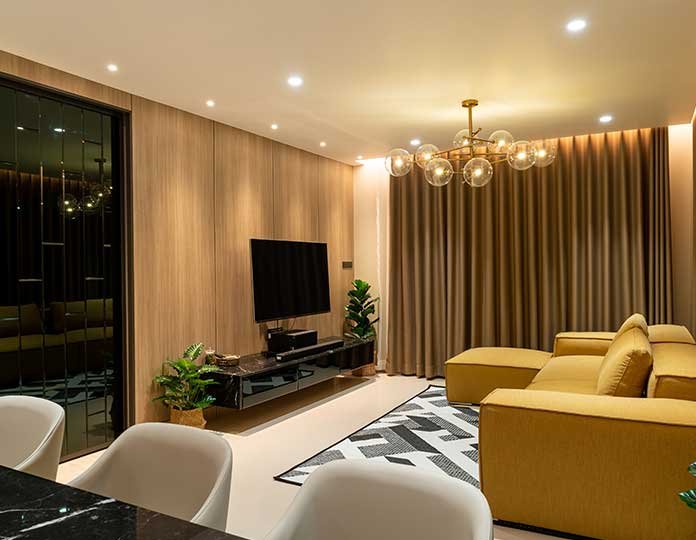Our living environments have a big impact on how we feel, act, and generally feel about ourselves. Interior design is a vital component of our surroundings that can have a significant effect on our mental health. Our moods can be favourably or negatively impacted by a room’s design, colour scheme, lighting, and overall attractiveness. This article examines how interior design might impact our mental health and provides tips for making aesthetically pleasing settings that encourage well-being.
Mood and Wellbeing
A space’s design features have a profound effect on our mood by evoking a range of feelings. For example, colours have the ability to affect how we feel. Cooler tones like blue and green can inspire calmness and relaxation while more vibrant colours like yellow and orange can encourage energy and happiness. We respond to colour differently depending on our cultural and personal preferences. Interior design can have a good impact on our emotional health by carefully choosing colours based on the desired mood.
Space Organisation
Our focus, productivity, and sense of control can all be greatly affected by the layout and design of a space. Overwhelm and distractions are frequently caused by cluttered and chaotic situations. On the other side, a neat and organised environment can improve mental clarity, speed up processes, and encourage efficiency. Interior design can contribute to the creation of a productive and peaceful environment by adding storage solutions, maximising furniture placement, and designing places specifically for various tasks.

Lighting
Circadian rhythm, which regulates our sleep-wake cycles and general well-being, is greatly influenced by both natural and artificial light. Daytime exposure to natural light has been shown to improve mood, energy, and productivity. On the other hand, poor lighting or too much exposure to artificial light, particularly late at night, can interfere with sleep and be harmful to mental health.
Interior design may support healthy circadian cycles and encourage better sleep by incorporating plenty of natural light sources, employing adaptable artificial lighting, and taking the balance between light and darkness into account.
Natural Surrounding
Our mental health is soothed and restored by our natural connection to nature. Biophilic design incorporates aspects of nature such as plants, organic materials, and vistas of the outside into inside settings. According to studies, being around nature inside can lower stress, improve cognitive performance, and boost general wellbeing. Even in tiny ways, applying biophilic design concepts to interior spaces can promote a feeling of serenity, relaxation, and kinship with nature.\
Noise
Stress, impatience, and difficulty concentrating are all symptoms of noise pollution, which can have a serious negative influence on mental health. By taking into account acoustics and using sound-absorbing materials like carpets, drapes, and acoustic panels, interior design can alleviate this problem. Interior design can promote calmness and tranquilly by lowering excessive noise levels and fostering a more serene and quiet atmosphere.
Interior design profoundly impacts our mental and overall well-being. We can design environments that encourage good mental health by knowing how different design components. It affects our emotions, productivity, sleep habits, connection to nature, and noise levels. Colour selection, organisation, lighting optimisation, biophilic design, and noise management. These are just a few of the thoughtful interior design decisions that may help create a peaceful setting. It supports our mental and emotional well-being. We may improve our quality of life and general happiness by placing a high priority on the construction of environments that nurture and uplift us.













Leave feedback about this